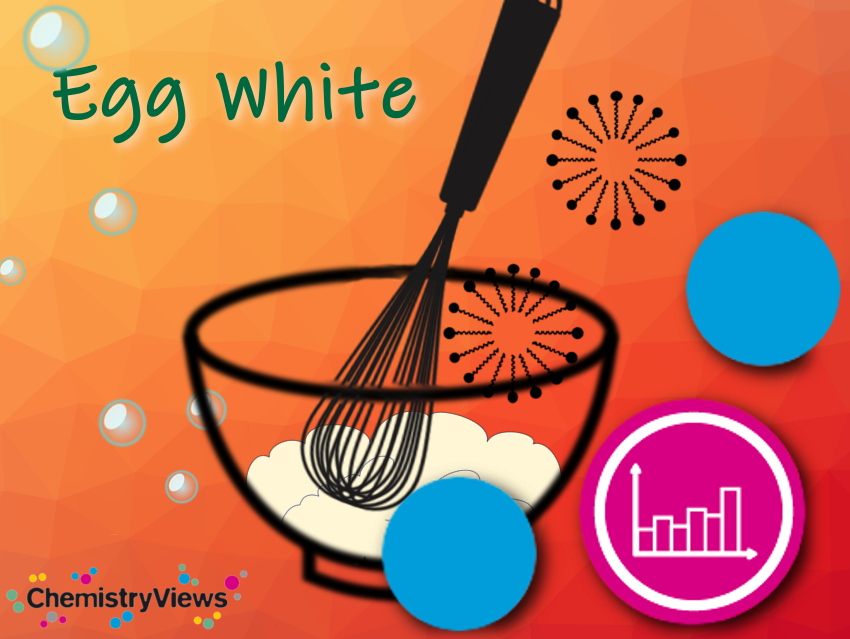Egg white or albumen is very suitable as a baking agent, as it forms a voluminous and strong foam which remains stable during drying by the baking process. The discovery of beaten egg white as a baking agent is a development of Renaissance cuisine in Europe. Previously, yeast was used as a baking agent. It gives the pastry a bread-like texture and taste of yeast. Egg whites loosened the pastry in a nice way and made new desserts possible, such as syllabub—a mixture of egg whites, wine, and cream.
.png)
Ovomucin has a polar character and aggregates to filamentous and fibroid structures. It gives the egg white its high viscosity. It is easily denatured by physical stresses—such as vigorous beating—and enables the retention of air bubbles.
The beaten egg whites are ready when they stick firmly to the whisk. 1 volume of egg white can give about 4.3 times the volume of beaten egg white. For a soufflé, it must be able to bear the weight of an egg in its shell. However, if the beaten egg whites are beaten for too long, they begin to separate irreversibly into a solid and a liquid part. This separation can be prevented by adding sugar. Sugar is hygroscopic and binds a large part of the water.

Acid (lemon juice, vinegar, tartar powder) stabilizes the cross-linking of the proteins; the egg white mass becomes firmer. Even small amounts of egg yolk or fat can prevent stiffening. The emulsifiers of the egg yolk interfere with the cross-linking by attaching to the egg white proteins. Fats attach themselves to the lipophilic protein components of the egg white.
If the beaten egg whites are sufficiently stiff, ingredients containing fat and egg yolk can be added, as a stable protein network has developed at this point. However, it is mechanically very sensitive. Ingredients should be added carefully with a stirring spoon and not with a hand mixer.
Before the invention of the hand blender, beating the beaten egg whites for a large cake took about three hours. In the first half of the 20th century, the electric hand mixer was developed, which lowered the amount of work considerably.
References
-
- Klaus Roth, Boiled Eggs: Soft and Hard — Part 1, ChemViews Mag. 2012. https://doi.org/10.1002/chemv.201200018
- Herve This-Benckhard, Rätsel der Kochkunst Naturwissenschaftlich erklärt. Springer-Verlag, Germany, 2013. ISBN 978-3-642-61163-6
- William Cook, The Physiomedical Dispensatory, 1869. (Retrieved November 24, 2020)
Also of Interest
-
- Chemistry Advent Calendar 2020
ChemistryViews 2020.
Daily highlights from the chemistry of spices - Video: Bouncing Egg
- Video: How Do You Get the Egg in the Bottle?
- Chemistry Advent Calendar 2020





Hi sir, this is shahabuddin from India. I am doing hotel business, in this food processing can i use all-purpose flour, whole beaten egg and vinegar in a better ( for coating any food ) . After that can i freezing it upto 1 month. Here i have a question is any reaction between egg and vinegar. Is any food poison with this combination. Please reply me🙏